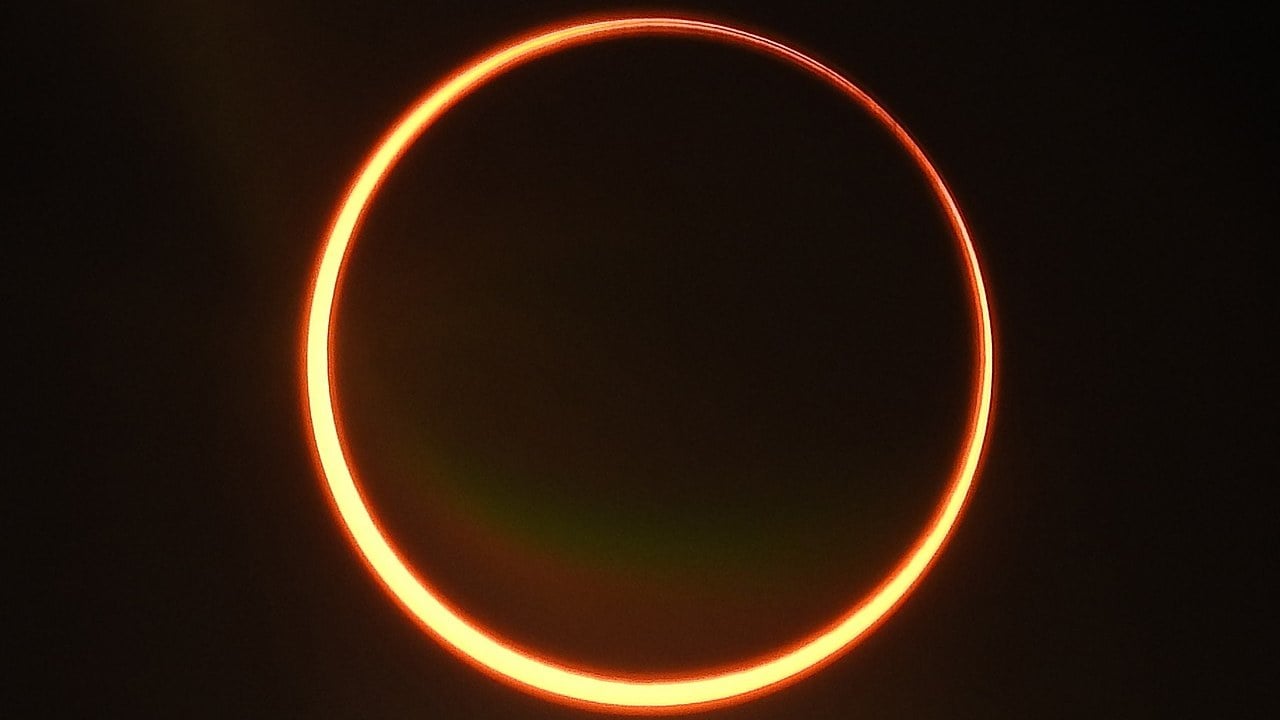Solar Eclipse on June 21, 2020: This year’s annular solar eclipse is set to take place on Sunday, June 21. According to the website TimeAndDate.com, the Surya Grahan will be visible from parts of India along with other regions of the world. The solar eclipse will start to appear at 9:15 AM IST and will reach its peak at around 12:10 PM IST. During this time, people will be able to witness a “ring of fire” in the sky.
When the term “ring of fire” comes in, it already excites most of us. While some of us just want to see it in action, there are a lot of people who would like to capture it. Smartphone cameras have advanced so much that even they can be used to get, if not exceptional, at least a usable shot for social media.

The annular solar eclipse of 26 December 2019, as seen from Jaffna, Sri Lanka.
Time And Date : Solar Eclipse 2020
The eclipse will be annular in some parts of the country, where sky gazers will get an opportunity to observe the “ring of fire” during the phenomenon, an official said on Monday. However, for most parts of the country, the eclipse will be partial.
The path of the annular solar eclipse will start near Gharsana in Rajasthan around 10:12 am IST and the phase of annularity will begin around 11:49 am IST and end at 11:50 am IST, Director of the MP Birla Planetarium Debi Prasad Duari told PTI.
The ring of fire will be visible for that one minute from places such as Suratgarh and Anupgarh in Rajasthan, Sirsa, Ratia and Kurukshetra in Haryana, and Dehradun, Chamba, Chamoli and Joshimath in Uttarakhand. According to the Nehru Planetarium, the solar eclipse will first be visible in Bhuj, Gujarat starting at 9:58 am IST and will be seen ending last in Dibrugarh, Assam at 2:29 pm IST.
In Kolkata, the partial eclipse will begin at 10.46 am IST and end at 2.17 pm IST, while the timing will be from 10.20 am IST to 1.48 pm IST in New Delhi, from 10.00 am IST to 1:27 pm IST in Mumbai, from 10.22 am IST to 1.41 pm IST in Chennai and between 10.13 am IST and 1.31 pm IST in Bengaluru.
On June 21, the annular eclipse will first start for the people of Congo in Africa and progress through South Sudan, Ethiopia, Yemen, Oman, Saudi Arabia, the Indian Ocean and Pakistan, before entering India over Rajasthan. It will then move on to Tibet, China, Taiwan, before ending at the middle of the Pacific Ocean.
This will be the last eclipse to be seen from India for the next 28 months as the next eclipse will be seen in India on October 25, 2022.
Watch solar eclipse online
For people living in parts of the country where the eclipse is visible, you can go outside and watch the annual solar eclipse. However, it is important to maintain social distance due to the COVID-19 pandemic and have proper eye protection because looking directly at the Sun can cause permanent damage to the eye’s retina. If you aren’t in the areas where the eclipse is visible or you don’t want to go out, you can watch the phenomenon online. TimeandDate and Slooh will be streaming the eclipse live on their YouTube and you can also follow the path of the eclipse using the NASA tracker.
In case you are one of them, here’s what you need to follow in order to get the best shot possible.
Before heading over to the camera app on your phone, you must go through a list of safety measures. These measures are very important to protect yourself from the harmful rays that the Sun will emit during the eclipse.
Safety Measures
- Do not look at the sun with your naked eyes. This can result in damage to your eyesight or even bring complete blindness.
- In order to protect your eyes, wear certified solar viewing glasses when viewing the sun before, during and after an eclipse.
- Do not look at the sun through your digital camera’s viewfinder. Instead, look at the display to have a glance at what you are capturing. On smartphones, you are safe since you only have the display to look at.
How to click pictures using your smartphone
- Practice clicking pictures of the moon to get an idea on how your phone’s camera works.
- When clicking pictures using a smartphone, try using a tripod to get the most stability. Also, when you zoom a lot, the image tends to get shaky. To avoid shaky images, a tripod is highly recommended.
- Do not rely on autofocus as most smartphones will not be able to properly focus on the sun. Tap on the object, which is Sun in this case, and your phone should be able to focus better.
- Reduce exposure. Most smartphones allow this by simply sliding your finger downwards. This will reduce the amount of light your camera sensor is taking in and as a result, your phone will be able to capture a much detailed shot.
- Digital Zoom can bring grain to your pictures. In order to avoid this, use DSLR cameras with good zoom capabilities. Alternatively, you can use zoom lens attachments on your phone.
- Try using a timer of at least 5 seconds. Once you tap the shutter button, the 5-second gap will allow your phone to get a more stable shot.

Photo Credit: NASA/ Hinode/ XRT
June 21 solar eclipse will be visible as a “ring of fire” in the sky












